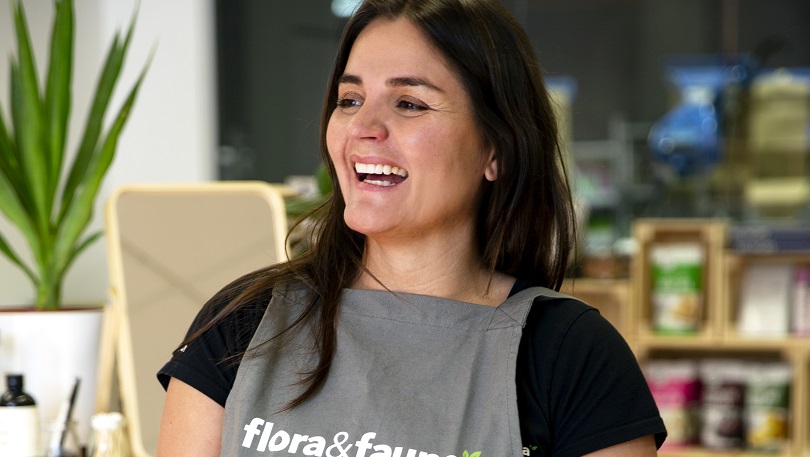Retailers need to talk to suppliers about plastic packaging: Julie Mathers

Flora & Fauna founder Julie Mathers has launched a new social media campaign encouraging the use of sustainable shipping materials, such as cardboard boxes, green wrap and biodegradable satchels, instead of plastic packaging.
The Take It Back campaign, which launched last Wednesday in conjunction with the start of Plastic Free July, notably targets both retailers and suppliers.
While consumer pressure has led some retailers to switch to sustainable packaging, supplier shipments don’t face the same level of scrutiny, and yet, they may be generating even more packaging waste.
“A product can go from the factory, to the brand, to the distributor, to us, to the customer. And at each of those touchpoints, packaging and waste is generated. And often it’s plastic,” Mathers told Inside Retail.
She was inspired to start the campaign after receiving a shipment from a supplier that was “way too full” of plastic. Mathers said she was shocked, given the supplier, like Flora & Fauna, is an eco-friendly business.
“If we can’t get this right in the eco industry, then we have no hope,” she said.
At the same time, she realised Flora & Fauna can’t solve the problem alone. The retailer went plastic free in its packaging in 2016, but roughly half of its shipments from suppliers still contain plastic.
“The customer doesn’t see it, but we have to do something with it,” she said.
According to the ABC’s 2018 War on Waste series, 85 per cent of soft plastics from bags and packaging end up in landfill. By 2050, it is estimated there will be more plastic than fish in the world’s oceans.
The use of plastic is increasingly being questioned. All states and territories except New South Wales have banned lightweight plastic bags in most retail shops, and there are grassroots campaigns to do away with plastic straws and takeaway coffee cups.
So far, packaging waste from online shopping hasn’t received the same attention, but that hasn’t stopped some retailers from taking action anyway.
Smaller boxes, less filler
Fast growing e-commerce company Adore Beauty has removed a large amount of plastic from its packaging since it introduced volumetric box sizing last year. The retailer is now able to use the smallest box size possible for each order, saving around 12 tonnes of cardboard a year, and reducing the amount of void fill required to protect items during shipping. The void fill it does use is made out of 100 per cent recycled matter and is 100 per cent recyclable.
“Our team and our customers have been really supportive,” said Adore Beauty founder Kate Morris of the changes.
“If anything, it has helped us realise that we can make a difference and that therefore there is more to do!”
Adore Beauty has also stopped offering plastic gift cards, in favour of electronic ones, and banned takeaway coffee cups at its worksites. All staff are given a reusable Keep Cup as part of their induction.
Morris said she fully supports the Take It Back campaign and has conversations with Adore Beauty suppliers about their packaging materials.
“As retailers, we have the power to change our own practices, and also to use our power as customers of the suppliers we buy from,” she said.
Another online retailer that has reduced the amount of plastic in its packaging is Booktopia. The company currently packs orders using either an iPack machine, which sizes the height of each box to the items inside, or a Priority Pack machine, which sandwiches items between two sheets of stiff, sticky paper.
This machine is known internally as the “ravioli machine”, according to Wayne Baskin, Booktopia deputy CEO and CTO.
The retailer currently uses bubble wrap for items sent in iPack boxes, but it will start using recycled paper filler in October when it moves into a new 3000sqm outbound facility next door to its 10,000sqm distribution centre.
The new space will also contain two new CMC CartonWrap machines, which can each pack up to 1,000 parcels per hour and build the packaging tight around the product, so no filler is required.
“The justification is speed of packaging for us, but yes, not shipping air is also better for the environment, as it allows Australia Post to use less trucks for the same number of parcels,” said Baskin of the multimillion-dollar investment in the machines.
These examples prove that sustainable packaging is a viable option both in terms of performance and cost, according to Anna Forster, a sustainability strategist and co-founder of The Purpose Network.
“I often hear the argument that alternative materials do not sufficiently protect the product or that they are too expensive. If designed and tailored to the respective business requirements, alternative packaging solutions can absolutely deliver the desired performance,” Forster told Inside Retail.
“Any additional cost should be regarded as an investment, rather – an opportunity to show leadership and build brand equity with increasingly conscious customers.”
Comment Manually
You must be logged in to post a comment.

No comments